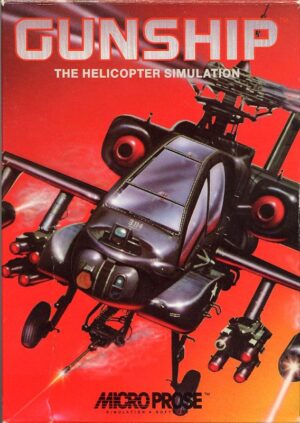Retro Replay Review
Gameplay
Chequered Flag offers a deceptively simple premise that unfolds into a nuanced time-trial racing challenge. Players choose between three uniquely balanced vehicles—the nimble McFaster Special, the well-rounded Psion Pegasus, and the powerful Ferretti Turbo—each demanding different driving strategies. Rather than racing against other cars, the true competition is against the clock and your own skill, pushing you to optimize every turn and straightaway.
(HEY YOU!! We hope you enjoy! We try not to run ads. So basically, this is a very expensive hobby running this site. Please consider joining us for updates, forums, and more. Network w/ us to make some cash or friends while retro gaming, and you can win some free retro games for posting. Okay, carry on 👍)
The lack of AI opponents might initially seem like a drawback, but it actually places a premium on precision and consistency. Each of the ten tracks, ranging from the sweeping curves of Silverstone to the tight hairpins of Monaco and the high-speed straights of Monza, is peppered with environmental hazards. Lakes, shards of broken glass, and oil slicks require split-second reactions; even a slight over-rev can spell disaster and force you to restart the lap.
Controls are deceptively deep for an early racing title: two keys per steering direction allow players to fine-tune the responsiveness of their car. A light tap offers gentle adjustments, while a full press mimics analogue control. Mastering this dual-input system is essential to shaving precious seconds off your lap times, and it contributes to a gratifying learning curve that keeps the experience fresh.
Graphics
Visually, Chequered Flag captures the spirit of classic early-’80s racing games with its crisp, top-down perspective and brightly colored sprites. Cars are instantly distinguishable by their bold liveries, and each track carries enough unique graphical flourishes—paddock tents at Silverstone, the harbor backdrop at Monaco, the rolling hills around Monza—to give every venue its own personality.
Hazards are clearly represented, ensuring that players can anticipate and react to dangers on the fly. Oil slicks appear as dark, reflective patches that contrast well with the asphalt, while water hazards and glass shards are rendered in simple yet effective detail. Despite the hardware limitations of the era, frame rate remains steady, even during tight turns or when multiple hazards occur in quick succession.
While Chequered Flag doesn’t push the limits of its system, it excels at clarity and functionality. Track boundaries, landmarks, and hazardous zones are all distinct, minimizing player confusion and emphasizing skillful driving. The straightforward aesthetic may lack modern sophistication, but it perfectly serves the game’s emphasis on time-trial precision.
Story
As a pure racing title, Chequered Flag doesn’t weave an elaborate narrative. Instead, it situates you in the high-stakes world of international circuit racing, where lap records carry prestige and drivers are judged by milliseconds. The implicit backstory is one of friendly rivalry among three prestigious carmakers, each vying for the title of fastest manufacturer.
Your personal journey is defined by the pursuit of perfection. Each lap conquered, each record broken, builds a quiet sense of achievement. The absence of dialogue or cutscenes might strike some as bare-bones, but it also keeps the focus squarely on driving skill and track mastery, allowing players to craft their own racing legacy.
Chequered Flag’s minimalistic approach to storytelling is a deliberate design choice. By stripping away narrative fluff, the game reinforces the idea that in racing, actions speak louder than words. The thrill of besting your own times—or those shared with friends via manual scorekeeping—becomes the story, and every new record lap feels like a personal victory.
Overall Experience
Chequered Flag stands out as a keenly focused racing experience that prioritizes time-trial precision over flashy showdowns. Its core loop—selecting a car, navigating diverse tracks, dodging hazards, and chasing lap records—remains compelling across repeated plays. The challenge ramps up organically, and the satisfaction of squeezing out a few extra tenths of a second is surprisingly addictive.
While modern racers might dazzle with photorealistic visuals and intricate career modes, Chequered Flag’s stripped-back design has its own charm. The dual-key steering system provides a tactile sense of control that feels ahead of its time, and the track variety ensures that no two laps feel identical. It’s a pure test of reaction times, decision-making, and course knowledge.
For retro gaming enthusiasts or anyone seeking a straightforward racing challenge, Chequered Flag delivers an experience that remains engaging decades after its release. The absence of computer rivals may not suit those craving wheel-to-wheel combat, but for players who relish the art of the perfect lap, this title offers a timeless appeal. Strap in, set your best time, and prepare to chase that elusive chequered flag.
 Retro Replay Retro Replay gaming reviews, news, emulation, geek stuff and more!
Retro Replay Retro Replay gaming reviews, news, emulation, geek stuff and more!









Reviews
There are no reviews yet.